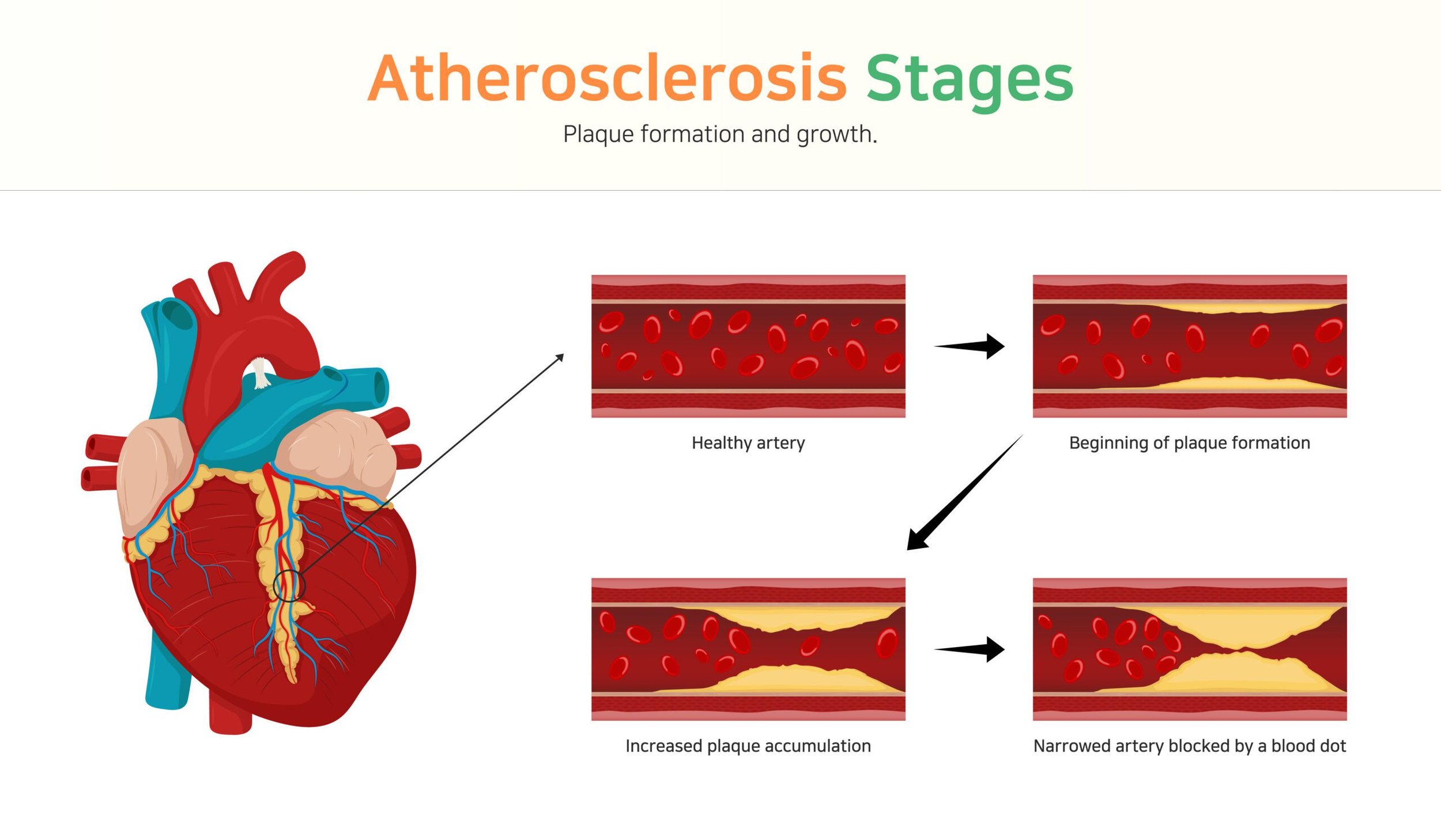Atherosclerosis
Atherosclerosis is the hardening of the arteries due to a build-up of plaque inside the artery. There are many diseases linked to atherosclerosis.
What is Atherosclerosis?
It is important to highlight the difference between the terms arteriosclerosis and atherosclerosis.
Arteriosclerosis happens when blood vessels that carry oxygen and nutrients from the heart to the rest of the body (arteries) become hardened and thick. This decreases the blood flow to organs and tissues. Normal arteries are elastic, and flexible. But due to age or certain medical conditions, the walls in the arteries can harden.
Atherosclerosis is a type of arteriosclerosis. Atherosclerosis happens when plaque - which is made up of fatty deposits and cholesterol - builds up in the arteries. Over time, plaque clogs the arteries and leads to inflammation (swelling). This causes the blood vessel walls to narrow, and parts of the body stop getting enough blood (ischemia).
Atherosclerosis is considered a heart problem much of the time (this is called Coronary Artery Disease). But it can affect arteries anywhere in the body.
Causes
Atherosclerosis happens naturally as people grow older. As we age, our blood vessels lose their flexibility and become more rigid. Atherosclerosis may begin at an earlier age in people who have risk factors such as diabetes, a family history of vascular disease, or heart disease. While we can’t control our age or genes, there are other risk factors that can be managed to lessen the risk.
Symptoms
There are symptoms of atherosclerosis that occur when the artery clogs and slows down the flow of blood to different parts of the body. In some cases, a piece of the plaque can break away and cause a blockage (embolus). The symptoms can vary depending on where the artery is too narrow or clogged:
BRAIN: If the arteries that supply blood to your brain are affected, you can experience a stroke. A stroke is a medical emergency and it’s important to act quickly. Call 9-1-1 right away if you notice any of these signs: face drooping, arm weakness, trouble speaking, trouble seeing, and/or a sudden, severe headache.
HEART: Coronary Artery Disease (CAD). If the arteries that supply blood to your heart become narrowed or blocked you may experience angina or (chest pain, pressure or tightness which may also occur in your shoulders, arms, neck, jaw or back) or a heart attack. Over time CAD can weaken the heart leading to heart failure or arrythmia.
LEGS: If the arteries are blocked in the legs, this can lead to Peripheral Artery Disease (PAD) and Chronic Limb-threatening Ischemia (CLTI). Some people with PAD don’t experience symptoms right away, which makes it hard to diagnose. Early symptoms of PAD include:
Weak or absent pulses
Shiny skin on the legs
Discomfort or cramping in the hips, thighs, or calf muscles after walking or climbing stairs
One foot or leg feels colder or appears more pale than the other
Sores or wounds on the toes, feet or legs that heal slowly, poorly, or not at all
KIDNEYS: If the arteries on the kidneys become hardened or too narrow, this can affect kidney function. Some people with atherosclerosis and diabetes develop renal artery stenosis (RAS). Signs and symptoms can include:
High blood pressure that suddenly gets worse and harder to control,
Edema (fluid in the legs and tissues)
Heart and kidney failure
Treatment & Prevention
You may not be able to prevent atherosclerosis, but you may be able to slow its progress by adopting a healthy lifestyle. It is important to speak with your healthcare provider before making any changes to your daily habits.
Eat a healthy, low-fat diet, including plenty of fruits,vegetables, fiber, and whole grain.
Avoid eating fried foods, foods high in sugar, and processed foods as much as possible.
Get plenty of regular cardiovascular exercise (elevates the heart rate) to increase blood flow throughout your body.
Engage in activities that help reduce stress, such as mindfulness, walking, or finding an enjoyable hobby.
If you smoke, talk to your provider about steps you can take to stop or reduce smoking.
Risk Factors
Smoking
High blood pressure
High cholesterol
Diabetes
Sedentary lifestyle
Carrying excess weight
Older age
Family history
Resources
Be The Voice For Patients Like You!
Vascular Cures is inviting patients and advocates to share their stories, advise on our programs, and help us advocate for patient needs. Patients as Partners is a community where patients are heard, empowered, and encouraged to impact the health system. Learn more and request more information here.


